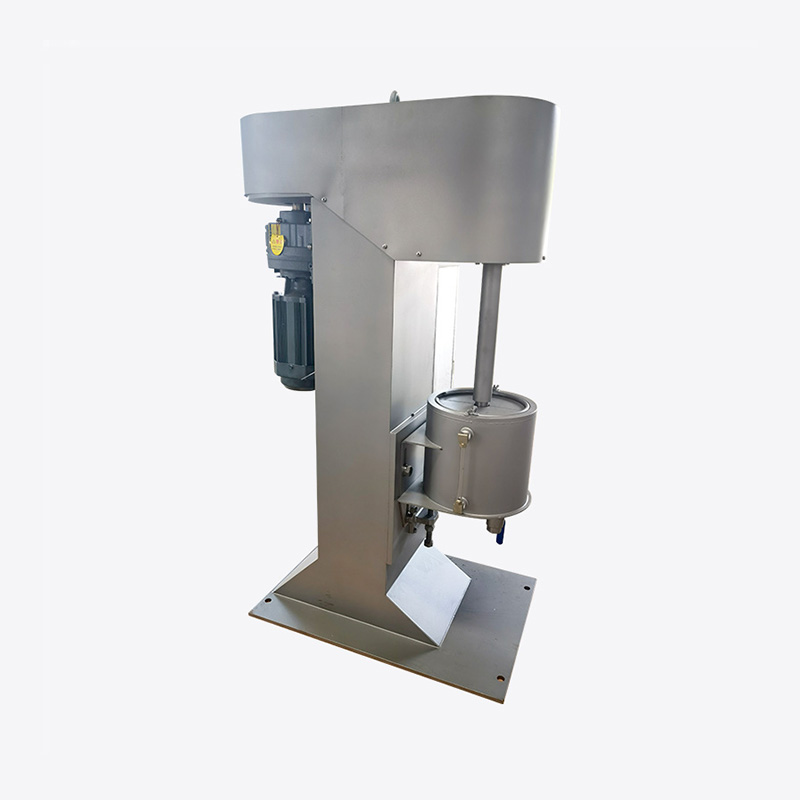In ceramic production, controlling the fineness and uniformity of the ball mill is crucial to ensure the quality of the final ceramic product. Fineness and uniformity directly affect the formability, sintering performance, strength, wear resistance and other physical and chemical properties of ceramics. Therefore, reasonable control of the operating conditions and process parameters of the ball mill is a key link in improving the quality of ceramic products. The following are several aspects to help control the fineness and uniformity of the ball mill to meet the quality requirements of ceramic products.
The grinding media in the ball mill (usually steel balls, ceramic balls, aluminum balls, etc.) have a direct impact on the fineness and uniformity of the material. According to the hardness, humidity and particle size requirements of the ceramic raw materials, select the appropriate grinding media size, hardness and density. Too small grinding media may not be able to effectively grind hard materials, while too large grinding media may cause energy waste and excessive wear.
In ceramic production, wet ball milling is more common because wet milling can effectively avoid excessive wear and dust pollution, and can better control fineness. Generally, using smaller grinding media and longer ball milling time helps to improve fineness and uniformity.
The speed of the ball mill is a key factor affecting the fineness of the grinding and the uniformity of the grinding. If the speed is too low, the impact force between the grinding medium and the material will be insufficient, thus affecting the grinding effect; if the speed is too high, it may cause excessive wear of the grinding medium and increase energy consumption. Therefore, the speed of the ball mill should be reasonably controlled to achieve the best grinding effect. Generally, the speed of the ball mill should be controlled within the optimal matching range of the material and the grinding medium to ensure fineness and uniformity.
In addition to the speed, the ball milling time is also an important factor affecting the fineness. In ceramic production, by controlling the ball milling time, the particles can reach the required fineness. Too long ball milling time may cause the particles to be too fine and increase energy consumption; while too short ball milling time may cause uneven particles or too large particle size. Therefore, it is crucial to reasonably select the ball milling time according to the type of raw materials and the requirements of the final product.

The material load has an important influence on the grinding effect of the ball mill. Too much material may cause poor material flow in the ball mill, thus affecting the grinding effect; while too little material may cause insufficient contact between the grinding medium and the material, and it cannot be effectively crushed. Therefore, the appropriate material load is controlled to ensure sufficient contact between the grinding medium and the material, thereby improving the crushing effect.
In addition, there are many types of raw materials used in ceramic production (such as kaolin, feldspar, quartz, clay, etc.), and the proportion of different raw materials directly affects the fineness and uniformity of the product. Reasonable proportion of ingredients can not only help the ball mill to evenly crush various raw materials, but also ensure the quality of ceramic blanks. Optimizing the proportion of ingredients is the key to ensuring product uniformity and fineness.
During the operation of the ball mill, the grinding effect can be effectively monitored by regularly checking the discharge particle size. If the discharge particle size does not meet the requirements, the operating parameters of the ball mill may need to be adjusted. Usually, the discharge particle size is detected by screening or laser particle size analyzer and other equipment. If the particle size is found to be uneven or too coarse, the size of the grinding medium, the ball milling time or the feed particle size can be appropriately adjusted.
For ceramic production, the fineness of the powder is often required to meet specific requirements (for example, 100 mesh, 200 mesh or finer), which requires continuous inspection of the discharge particle size during the ball milling process and corresponding adjustments based on the results.
In wet ball milling, moisture control also has an important influence on fineness and uniformity. Excessive moisture may cause the material to agglomerate in the ball mill, affecting the grinding effect; while too little moisture may increase the friction between the grinding medium and the material, thereby increasing energy consumption and wear. In order to obtain uniform and fine ceramic powder, the appropriate amount of water added is usually controlled according to the characteristics and requirements of the material.
In the wet ball milling process, it is very important to maintain appropriate slurry viscosity and fluidity. Too high slurry viscosity may cause the particles to be unable to disperse evenly, affecting fineness and uniformity. Therefore, moisture control in wet milling can not only improve grinding efficiency, but also improve the dispersion of materials, thereby ensuring uniform and fine powder.
Through reasonable operation and process parameter adjustment, the fineness and uniformity of the ceramic powder can be ensured to meet the production requirements, thereby improving the quality of ceramic products. With the advancement of technology, the introduction of intelligent control and online monitoring systems will further optimize the operation of the ball mill and ensure high efficiency, precision and stability in the ceramic production process.



 English
English Español
Español









